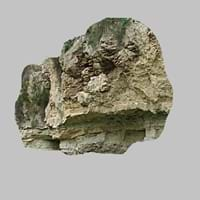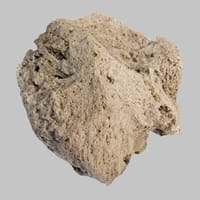Definition
A water-soluble mineral sediment resulting from concentration and crystallization by evaporation from an aqueous solution
Pumice is a volcanic rock that consists of highly vesicular rough textured volcanic glass, which may or may not contain crystals
Discoverer
Usiglio
Unknown
Etymology
From a sediment left after the evaporation
From Old French pomis, from a Latin dialect variant of pumex
Class
Sedimentary Rocks
Igneous Rocks
Sub-Class
Durable Rock, Soft Rock
Durable Rock, Medium Hardness Rock
Group
Not Applicable
Volcanic
Other Categories
Coarse Grained Rock, Fine Grained Rock, Medium Grained Rock, Opaque Rock
Fine Grained Rock, Opaque Rock
Color
Colourless, Green, Grey, Silver, White
Beige, Colourless, Grey, Light Green, Light Grey, Pink, White, Yellow- grey
Durability
Durable
Durable
Appearance
Glassy, Vesicular and Foilated
Vesicular
Interior Uses
Decorative Aggregates, Entryways, Flooring, Homes, Interior Decoration
Decorative Aggregates, Flooring, Homes, Interior Decoration
Exterior Uses
As Building Stone, As Facing Stone, Garden Decoration, Paving Stone
As Building Stone, As Facing Stone, Garden Decoration, Paving Stone
Other Architectural Uses
Curbing
Curbing, Powder
Construction Industry
As a Flux in the Production of Steel and Pig Iron, As a Sintering Agent in Steel Industry to process Iron Ore, As Dimension Stone, Cement Manufacture, for Road Aggregate, Making natural cement, Manufacture of Magnesium and Dolomite Refractories
As Dimension Stone, Cement Manufacture, for Road Aggregate, In landscaping and horticulture, Making natural cement, Production of lightweight concrete blocks
Medical Industry
Taken as a Supplement for Calcium or Magnesium
As an abrasive in skin exfoliating products, In Chemical and Pharmaceutical Industry, Medicines and Cosmetics
Antiquity Uses
Artifacts
Artifacts
Commercial Uses
Used in the manufacture of Ceramic Powder, Used in the preparation of Sulfuric Acid and Silicon Diborite
As a traction material on snow-covered roads, As an abrasive in pencil erasers, Fine abrasive used for polishing, Manufacture of Soap, Solvents, Dyes, Plastics and Fibres, Used in aquariums
Types
Not Available
Scoria
Features
Generally rough to touch, Splintery, Veined
Host Rock for Lead
Archaeological Significance
Monuments
Not Yet Used
Not Yet Used
Famous Monuments
Not Applicable
Not Applicable
Sculpture
Not Yet Used
Not Yet Used
Famous Sculptures
Not Applicable
Not Applicable
Figurines
Not Yet Used
Not Yet Used
Formation
Evaporite is water-soluble mineral sediment which forms from concentration and crystallization by evaporation from an aqueous solution.
Pumice rock forms when the magma cools so quickly that atoms in the melt are not able to arrange themselves into a crystalline structure.
Mineral Content
Calcite, Cancrinite, Gypsum, Kyanite, Magnetite
Aluminum Oxides, Calcite, Carbonate, Iron Oxides, Silica
Compound Content
CaMg(CO3)2, CaO, Calcium Sulfate, KCl, MgO, NaCl
Al, Aluminium Oxide, CaO, Carbon Dioxide, MgO, Silicon Dioxide
Types of Metamorphism
Burial Metamorphism, Cataclastic Metamorphism, Contact Metamorphism, Impact Metamorphism, Regional Metamorphism
Burial Metamorphism, Impact Metamorphism
Types of Weathering
Not Applicable
Biological Weathering, Chemical Weathering, Mechanical Weathering
Types of Erosion
Not Applicable
Chemical Erosion, Coastal Erosion, Glacier Erosion, Sea Erosion, Water Erosion, Wind Erosion
Grain Size
Medium to Fine Coarse Grained
Fine Grained
Fracture
Conchoidal
Planar
Streak
White
White, Greenish White or Grey
Porosity
Less Porous
Highly Porous
Luster
Subvitreous to Dull
Earthy
Toughness
Not Available
3
Specific Gravity
2.86-2.99
2.86
Transparency
Translucent
Opaque
Density
2.8-2.9 g/cm3
0.25-0.3 g/cm3
Resistance
Heat Resistant, Pressure Resistant
Impact Resistant, Pressure Resistant
Deposits in Eastern Continents
Asia
Not Available
Afghanistan, Indonesia, Japan, Russia
Africa
Not Available
Ethiopia, Kenya, Tanzania
Europe
United Kingdom
Greece, Hungary, Iceland, Italy, Turkey
Others
Not Yet Found
Not Yet Found
Deposits in Western Continents
North America
USA
Bahamas, Barbados, Canada, Costa Rica, Cuba, Jamaica, Mexico, USA
South America
Colombia, Paraguay
Argentina, Chile, Ecuador, Peru
Deposits in Oceania Continent
Australia
Central Australia, Western Australia
New Zealand, Western Australia
All about Evaporite and Pumice Properties
Know all about Evaporite and Pumice properties here. All properties of rocks are important as they define the type of rock and its application. Evaporite belongs to Sedimentary Rocks while Pumice belongs to Igneous Rocks.Texture of Evaporite is Earthy whereas that of Pumice is Vesicular. Evaporite appears Glassy, Vesicular and Foilated and Pumice appears Vesicular. The luster of Evaporite is subvitreous to dull while that of Pumice is earthy. Evaporite is available in colourless, green, grey, silver, white colors whereas Pumice is available in beige, colourless, grey, light green, light grey, pink, white, yellow- grey colors. The commercial uses of Evaporite are used in the manufacture of ceramic powder, used in the preparation of sulfuric acid and silicon diborite and that of Pumice are as a traction material on snow-covered roads, as an abrasive in pencil erasers, fine abrasive used for polishing, manufacture of soap, solvents, dyes, plastics and fibres, used in aquariums.









